At first glance, the islands look forbidding, dark, and lifeless. Then you notice the movement. Retreating waves reveal orange-red crabs, skittering across black lava rocks. A sea lion slaps into view. That’s how it happens in the Galapagos. The picture develops slowly, like an old-time photo.
97 percent of the land mass of the Galapagos is a national park of Ecuador. The islands are in the Pacific Ocean, 600 miles due west of the home country. Strict regulations keep them pristine and primitive-feeling. Nature takes precedence over the rights of any single animal species, including humans.
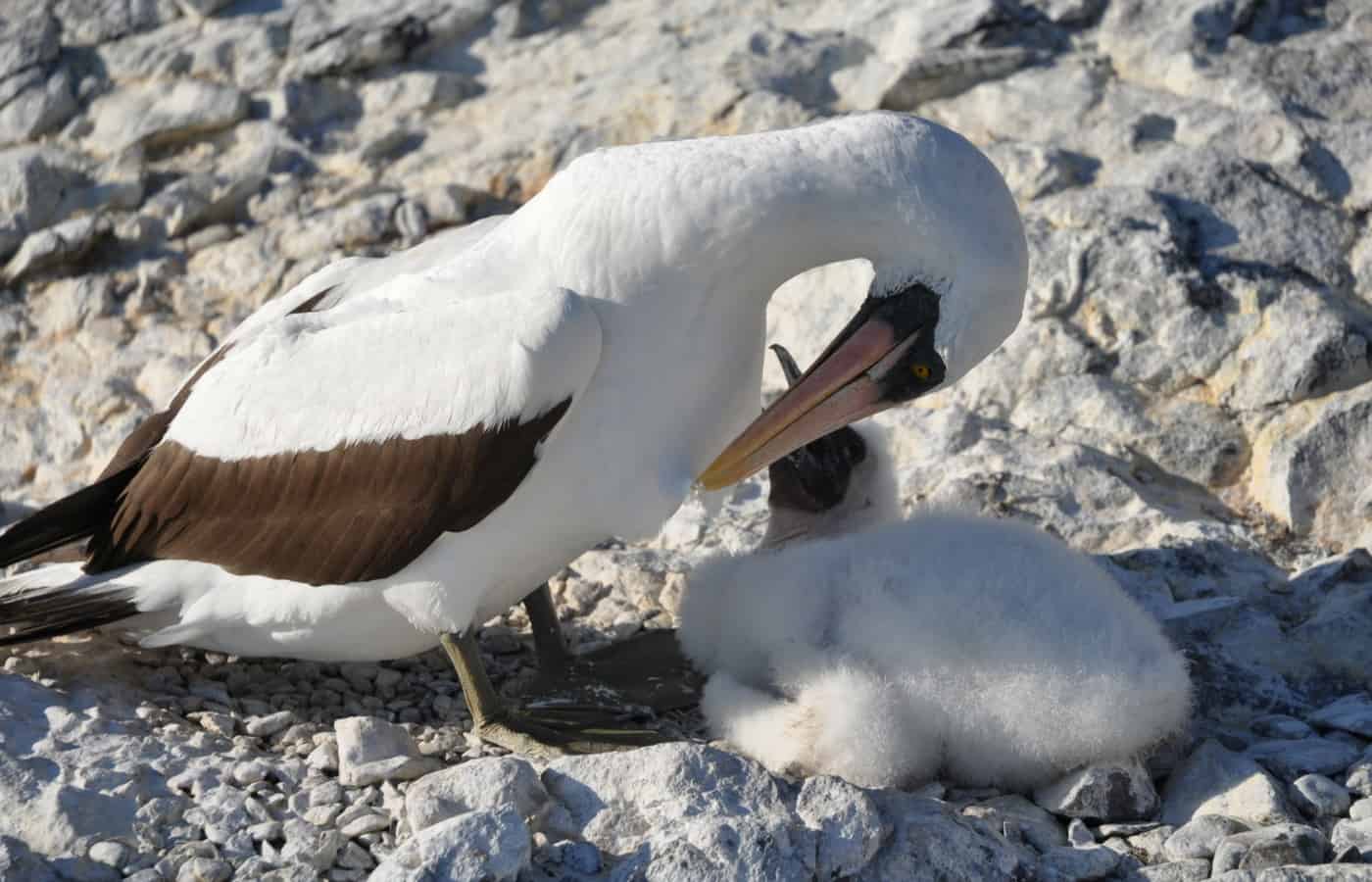
Nazca Booby parent and chick
Animal Encounters
Knowing a bit about the work of Darwin, we expect to see lots of different types of animals, but learn that each island hosts only a few species, each specially evolved and fascinating in its own way.
Finches are most famous. One fist-sized type has an extra sharp beak, perfect for grasping tiny seeds.
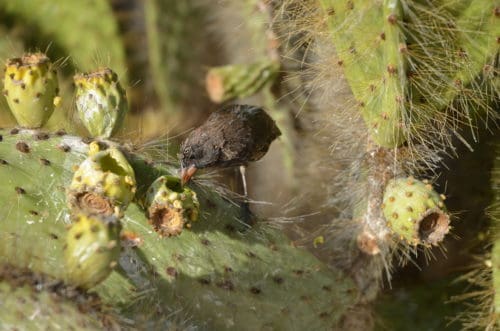
Galapagos Finch with specialized beak
When food is scarce, the finches turn into vampires, sucking the blood of much larger birds, including blue-footed boobies. The boobies don’t mind because the tiny birds use the same procedure to clean them of parasites.
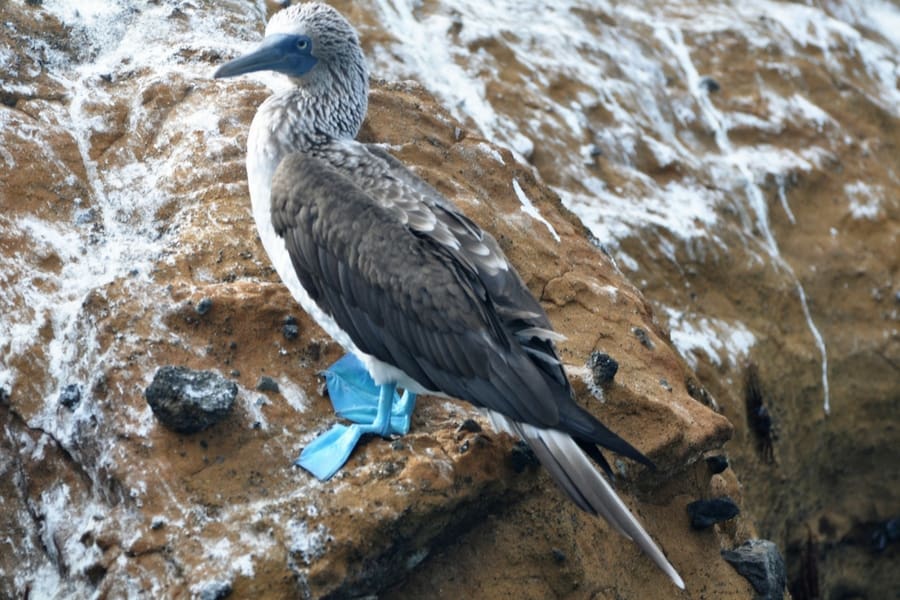
Blue-footed Booby
On Santa Fe island, Marine iguanas eavesdrop on mockingbirds who shriek when hawks appear. Since hawks are the iguana’s main predator, the reptiles scatter when they hear the cry, so they aren’t such an easy target.
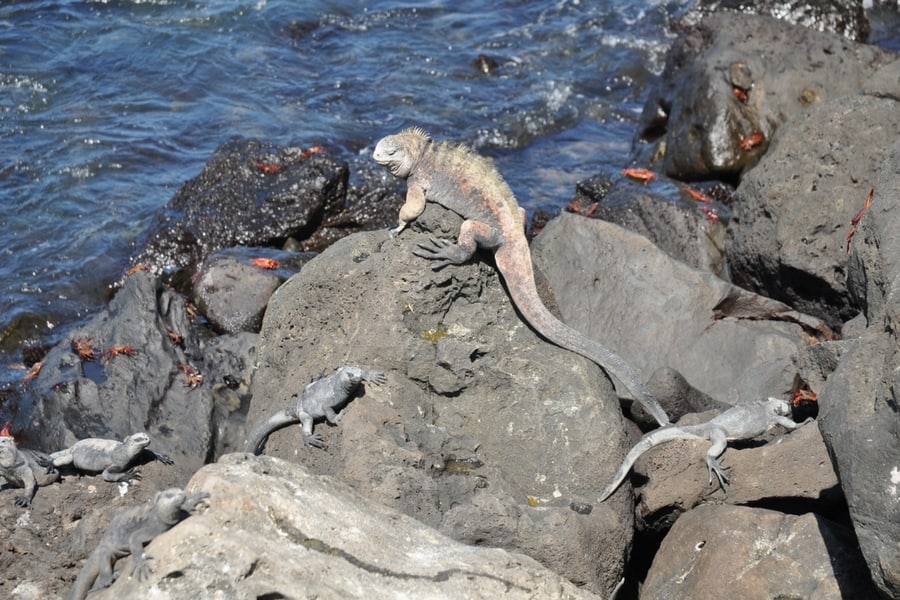
Iguanas on alert
Character-building Snorkels
Symbiotic relationships also form between human animals. Before we snorkel, each person is assigned a safety buddy. Once paired, even if we’ve never met, we instantly look out for each other. Like sea lions, we wordlessly communicate throughout our swim. One person casting a glance, the other catching it and nodding OK.
Gradually, we become more fearless in the water—or perhaps just more believing that hammerheads prefer fish to human flesh. Deliberately, we search for the undersea predators. When one of us hollers “Shark!” all rush over to glimpse the grey streamlined body passing below.
Sensory Hikes
Getting up extra early for a land-based excursion, we are rewarded by the sight of two pastel flamingos perfectly reflected as they feed in an inland lake. But our guide is not satisfied we merely look. “Let’s stop and listen to the soundscape,” he suggests. I stop taking pictures when I realize my shutter is the only intrusion on the natural symphony.
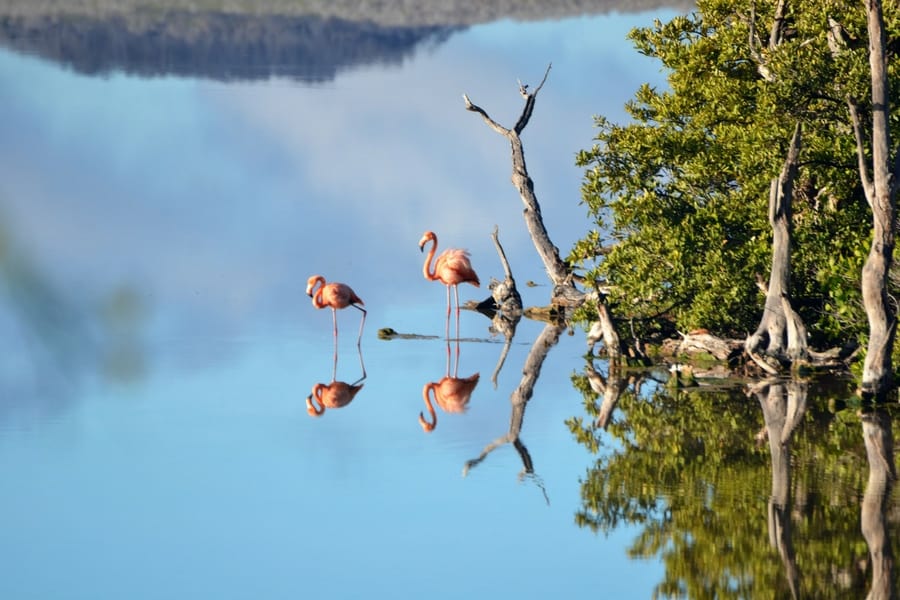
Flamingos on Floreana Island, Galapagos
On another day, our guide wants us to go barefoot on the sandy beach. Although the day is hot and sunny, the sand feels cool because it is made of miniscule pieces of sea-polished, calcium-based coral.
As we near a scrubby palo santo tree, he urges us to sniff the sap. “It reminds me of my grandmother,” he recalls with a faraway look. “When I was a boy, she burned the wood as incense on holy days.”
Gradually, our dulled senses reawaken.
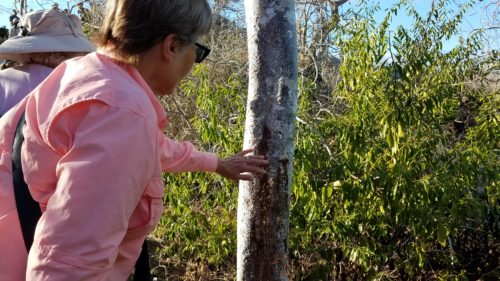
Getting a whiff of the palo santo tree
One day, we cast off for remote, deserted Post Office Bay. Behind the lonely dunes stands a wooden barrel with a small unlatched door. Inside are packets of letters and postcards that have no stamps. For decades and decades, travelers have left mail here, hoping each piece would be delivered by a future visitor who lives at the intended destination. As guides read off addresses, a few good-hearted souls accept the task.
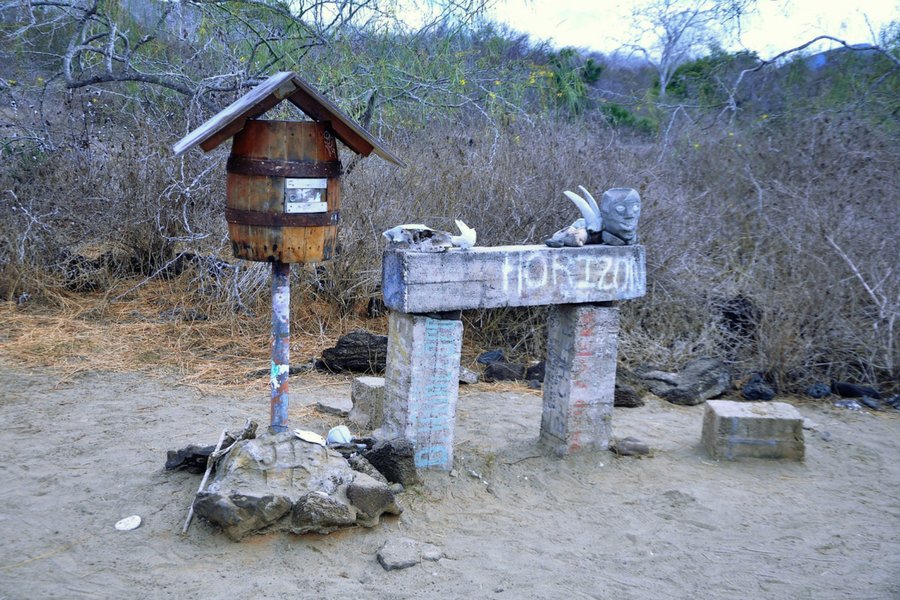
Post Office Bay
Onboard Delights
On return from some excursions, crew members surprise us with glasses of cool juice squeezed from fruits we’ve never heard of. In that gentle way, we are coaxed out of our culinary comfort zones.
For one lunch, only Ecuadorian specialties are served, right down to Endemic, the sole Galapagos-made beer.
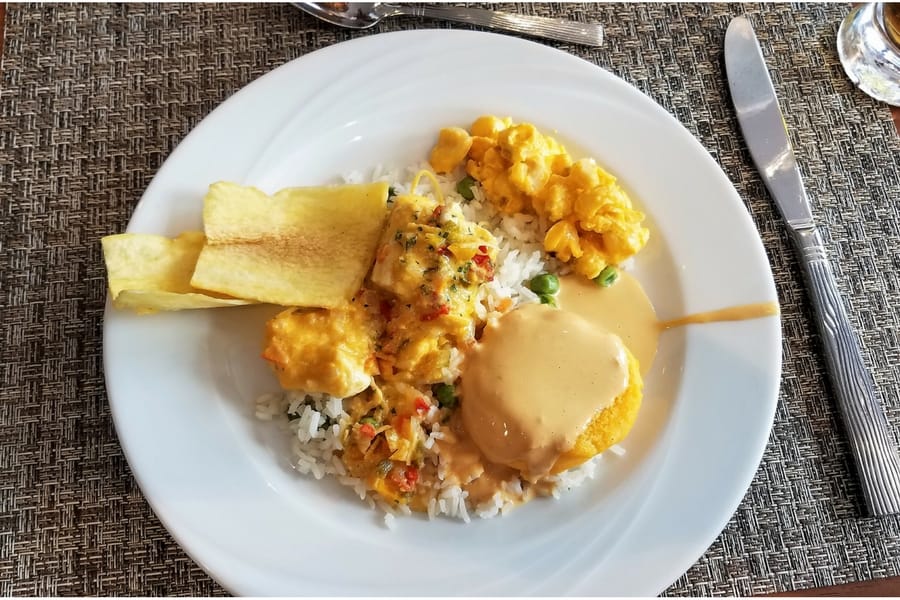
Ecuadoran Specialties
That night, I convince a couple new friends to go with me to the captain’s bridge to ask if they would douse the lights so we could stargaze. The crew happily agrees.
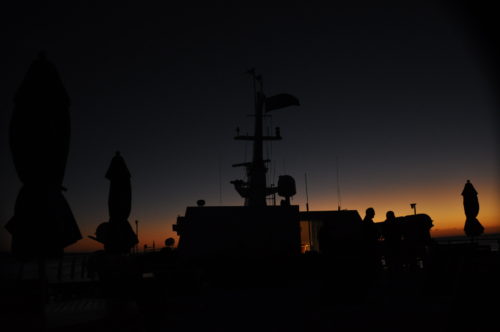
Night falls on the National Geographic Endeavour II
In the moonless sky, Orion stands sentinel, as it does far north of the equator. But as our eyes accommodate to the darkness, the constellation gradually blends in with a blanket of tiny stars that spread out in all directions. Some are tightly packed in a broad stripe. I hadn’t seen the Milky Way since summer nights long ago, stargazing with my cousins in the back yard.
Life Lessons
With all the activity an expedition brings, there is little time for contemplation. Certainly, this trip has been a lesson in admitting wrong assumptions. A desiccated landscape teems with life. An iguana sluggish on a land is swift and agile in the water. It’s a compliment for someone to call you “an animal.”
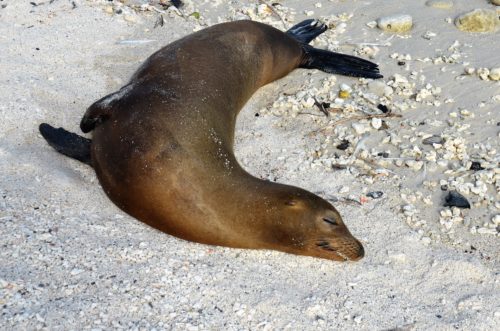
A few days after our voyage, a fellow passenger drives to an address in Thiensville, Wisconsin in the USA. When he knocks on the door, a woman answers, her face quickly changing from wary to delighted. She remembers when her friends went to the Galapagos years ago. And they remembered to send her a card.
This voyage to the Galapagos Islands was aboard the National Geographic Endeavour II, with expert guidance by Lindblad Expeditions.
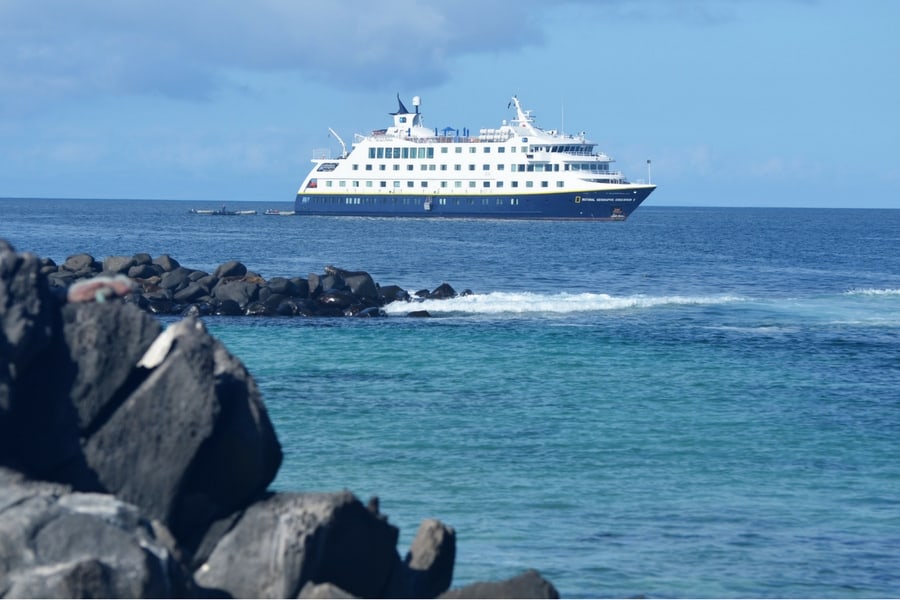
National Geographic Endeavour II among the Galapagos IslandsAll photos by the author








